Variation in age structures (cont.)
The table below shows some commonly found age-structure types, as well as some less commonly found unusual looking population pyramids (high immigration in the working ages, and populations affected by HIV).
![]() Click on the tabs below to see different age-structure types.
Click on the tabs below to see different age-structure types.
Population pyramid for Mali, 2010.
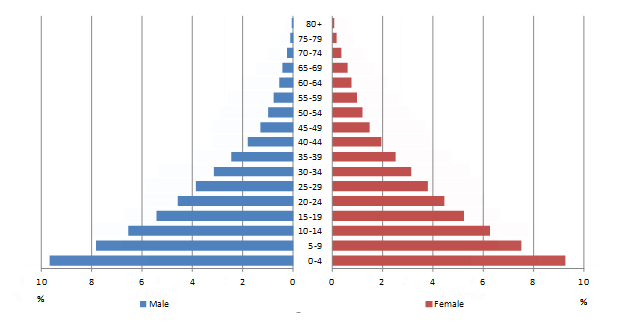
Young and growing
Young populations have a typical ‘pyramid’ shape, with a broad base indicating high proportions of children. Indicates a population undergoing rapid growth.
Population pyramid for Italy, 2010.
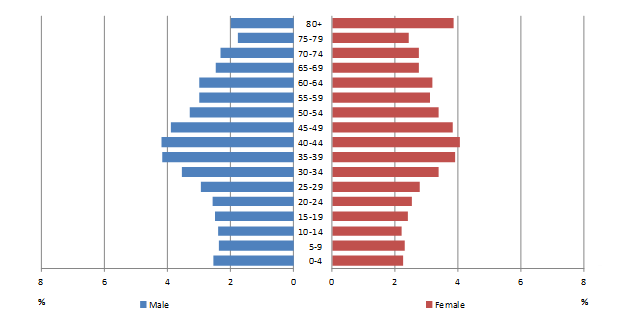
Old
A top-heavy population pyramid with higher proportions in older age groups indicates an old population. This may result from a long period of below replacement fertility, alongside low death rates. Old populations may or may not be declining.
Population pyramid for Turkey, 2010.
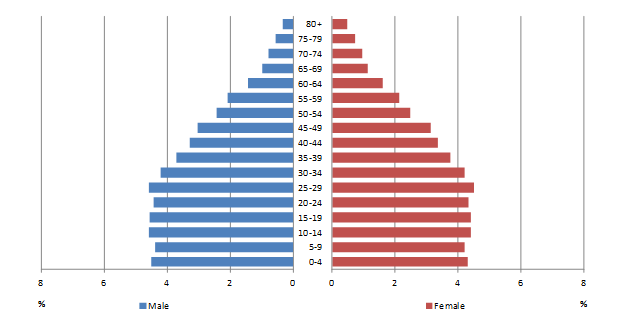
Transitional
Transitional populations are moving from a young age structure to an old age structure. A pyramid shaped like this suggests a recent history of fertility decline.It is also possible to see an increase in the size of the youngest age groups. This is related to the larger cohorts moving into reproductive ages rather than an increase in fertility.
Population pyramid for Algeria, 2010.
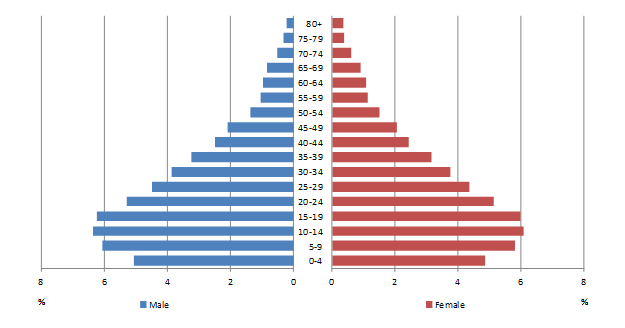
Sudden fertility decline
If fertility declines suddenly, it manifests in the population pyramid in the form of an “undercut” at the youngest ages. Of course, in later years this indentation will be found higher in the pyramid as the cohort ages.
Population pyramid for United Arab Emirates, 2010.
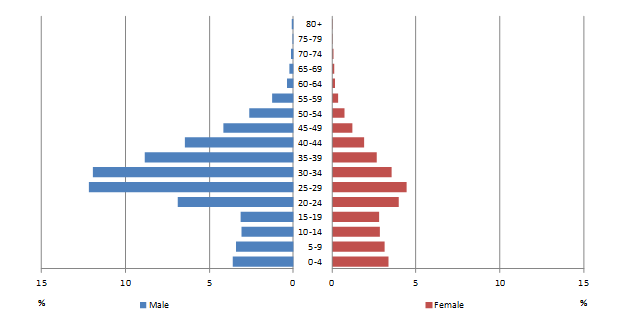
High working-age immigration
Some populations have experienced levels of immigration which have severely distorted their population pyramids. Age structures such as the one above, with a large, unbalanced bulge during working ages, are found mainly in the Persian Gulf states.
Projected population structure for Botswana, 2020, with and without the impact of AIDS.
Source: US Bureau of the Census, World Population Profile 2000.
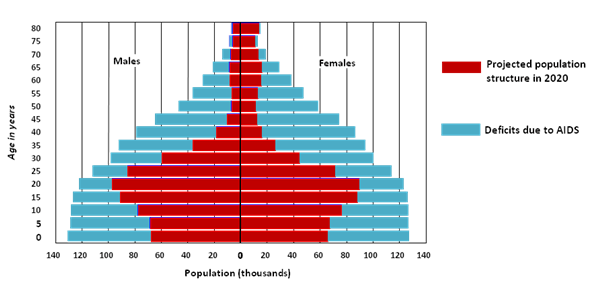
HIV/AIDS affected populations
The population pyramid depicted above shows the impact of an extremely high HIV prevalence, combined with a lack of anti-retroviral therapies, on the age structure of a population. This is often referred to as “population chimney”, as high mortality from AIDS in young adulthood leads to the distinctive narrowing in the upper half of the population pyramid. There is also a narrowing at the base of the pyramid due to the lowering of fertility because of the epidemic (through increased infertility and less women reaching motherhood) and due to increased infant mortality due to mother-child transmission of HIV.
Source: UN Population Division 2011.